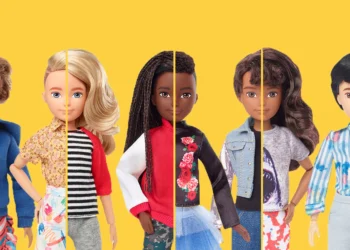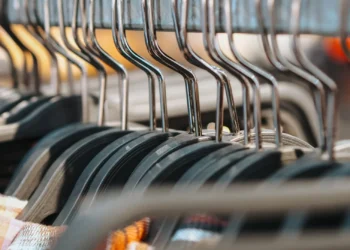From Runway to Rebirth: The Journey of Eco-Friendly Fabrics
Dive into the world of sustainable fashion and discover how eco-friendly fabrics are reshaping the industry, one garment at a time.
1. The Core of Change
Eco-friendly fabrics are revolutionizing sustainable fashion. Choosing the right material can determine up to 80% of a garment’s environmental impact even before it hits the stores. This makes fabric selection a critical step for brands committed to reducing their footprint.
2. Spotlight on Low-Impact Leaders
Fabrics like Tencel™ Lyocell and mycelium leather are gaining recognition. Their minimal water usage and carbon emissions make them ideal choices for environmentally conscious brands. These innovative materials are setting new standards for sustainability in the fashion industry.
3. Consumer Demand Drives the Shift
There’s a noticeable move away from synthetic materials. Over 70% of consumers are actively seeking or willing to pay more for clothing made from natural fibers. This demand is helping to curb microplastic pollution and promote ethical manufacturing practices.
4. Fabric Impact Scorecard
Consider the environmental impact and versatility of different fabrics. The following table highlights key attributes of popular sustainable materials:
| Fabric | Impact | Water Use | CO₂ / kg | Feel | Ideal Use |
|---|---|---|---|---|---|
| Tencel™ Lyocell | ★★★★★ | Very Low | 1.6 kg | Silky, breathable | Tees, dresses |
| Organic Cotton | ★★★★☆ | Medium | 2.1 kg | Crisp, soft | Jeans, shirts |
| Recycled Polyester | ★★★☆☆ | — | 2.7 kg | Smooth, sporty | Activewear |
| Hemp / Linen | ★★★★☆ | Low | 1.7 kg | Textured, cooling | Workwear, basics |
| Mycelium Leather | ★★★★☆ | Very Low | 1.3 kg | Suede-like | Bags, shoes |
Data source: Whole People “2025 Sustainable Fashion Market Snapshot” and Fabric Scorecard July 2025
As the table indicates, materials like Tencel™ Lyocell and Mycelium Leather lead the way in low water usage and CO₂ emissions, offering a compelling alternative for eco-conscious consumers.
Slow Fashion Revolution: Why Less is More in Your Wardrobe
Discover how the slow fashion movement is reshaping consumer habits and promoting sustainability as a core value in the apparel industry.
1. The Rise of Conscious Consumerism
Fueled by growing awareness of fast fashion’s environmental and social costs, consumers are increasingly embracing slow fashion. This shift emphasizes quality, durability, and ethical production, signaling a move away from fleeting trends towards timeless pieces. The core idea is that buying less, but buying better, reduces waste and supports responsible manufacturing practices.
2. Generational Shift in Apparel Choices
Millennials and Gen Z are at the forefront of this change, driving demand for sustainable apparel. Their preference for eco-friendly options is reshaping the market, encouraging brands to adopt more transparent and ethical practices. This generational influence is set to significantly impact the sustainable apparel market in the UK.
3. Forecasting the Future of Sustainable Fashion
By 2027, Millennials and Generation Z are projected to hold a significant portion of the sustainable apparel market share in the UK, demonstrating their commitment to eco-conscious fashion choices. The following table illustrates the forecasted market share by generation:
| Generation | Forecast Sustainable Apparel Market Share in UK (2027) |
|---|---|
| Millennials | 32% |
| Generation Z | 32% |
| Generation X | 22% |
| Baby Boomers | 14% |
Data Source: Statista, “Forecast share of the sustainable apparel market in the United Kingdom (UK) in 2027, by generation” June 24, 2025
4. Industry Response and Adaptation
In response to consumer demand and new regulations, fashion brands are increasingly focusing on sustainability. Transparency in supply chains, responsible sourcing of materials, and circular economy initiatives are becoming central to their strategies. This proactive approach helps reduce waste and aligns with the values of conscious consumers.
Unraveling the Myths: What Truly Makes a Brand Ethical?
Explore the truth behind ethical branding and discover why a balanced approach to sustainability is crucial for long-term impact.
1. The Environmental Emphasis
Sustainable fashion brands often highlight their eco-friendly initiatives, such as reducing carbon footprints and using sustainable materials. While these efforts are commendable, a recent content analysis reveals that environmental concerns tend to overshadow other critical aspects of sustainability.
2. Uneven Coverage Across Spheres
The analysis indicates that environmental dimensions receive significantly more attention compared to economic and social factors. 65% of sustainable trainer brands focus on environmental aspects, while economic and social dimensions receive 27% and 8% coverage, respectively.
| Sustainability Sphere | Coverage Among Sustainable Trainers’ Brands (%) |
|---|---|
| Environmental | 65% |
| Economic | 27% |
| Social | 8% |
Data Source: National Institutes of Health, “An analysis of sustainability and performance indicators in Eco-Trainers’ Brands” July 2025
3. The Triple Bottom Line
Experts emphasize that genuine ethical practices necessitate a holistic integration of the Triple Bottom Line: environmental protection, fair labor practices, and economic viability. Overemphasizing one aspect at the expense of others can harm a brand’s reputation and long-term effectiveness.
4. Need for Balance
True sustainability in fashion requires brands to strike a balance across all three dimensions of the Triple Bottom Line. This balanced approach ensures that brands are not just marketing eco-friendly products but are also committed to fair labor practices and economic sustainability.
Trash to Treasure: How Recycled Materials are Reshaping Style
Explore how the fashion industry is embracing recycled materials, turning waste into stylish new garments and reshaping the future of style.
1. The Rise of Recycled Materials
Environmental concerns and changing consumer expectations are driving a significant shift in the sustainable fashion sector. Recycled materials are becoming increasingly important as brands aim to reduce textile waste by transforming discarded fabrics, including cotton, wool, denim, and even plastic bottles, into new clothing.
2. Addressing Textile Waste
The “trash to treasure” approach directly tackles the alarming statistic that approximately 87% of textiles end up in landfills or incinerators, while only about 1% is currently recycled into new clothing. This move towards circularity is fueled by both environmentally conscious consumers and brands offering recycling programs and resale platforms for old apparel.
3. Consumer Behavior and Market Growth
Millennials and Gen Z are expected to allocate up to 34% of their apparel budgets to secondhand items in 2025, a figure that may increase due to economic factors like tariffs. Market projections indicate robust double-digit growth rates, with global sustainable fashion sales reaching nearly $14 billion in 2025. This growth signals that sustainability is becoming a defining force in the fashion industry.
4. Sustainable Fashion Sales on the Rise
The sustainable fashion market is experiencing substantial growth, with projections indicating continued expansion in the coming years. This growth is reflected in both overall sales and the increasing popularity of the second-hand apparel market, signaling a shift in consumer preferences towards more sustainable options.
Zero Waste Goals: Creating a Fashion Future with No Leftovers
Explore how the fashion world is embracing sustainability, shifting towards zero waste and innovative solutions to minimize environmental impact.
1. The Rise of Conscious Consumerism
Today’s consumers are increasingly aware of the environmental impact of their fashion choices. This awareness is driving a significant shift towards sustainability, with consumers actively seeking out brands that prioritize ethical and eco-friendly practices. The demand for sustainable fashion is not just a trend; it’s a reflection of evolving values and a desire to reduce the industry’s massive waste footprint.
2. Circular Fashion Models Gain Traction
To combat textile waste, the fashion industry is embracing circular systems. Resale, upcycling, and rental models are becoming increasingly popular. These approaches extend the life cycle of garments, reduce the need for new production, and significantly decrease the amount of clothing that ends up in landfills. This move towards circularity is essential for achieving zero waste goals.
Organic Cotton Chronicles: Growing Green and Dressing Clean
Explore how organic cotton is becoming a staple in sustainable fashion, offering a blend of comfort and environmental consciousness for today’s eco-aware consumers.
1. The Rise of Eco-Conscious Clothing
Sustainable fashion has evolved from a niche interest to a mainstream movement, with consumers increasingly prioritizing eco-friendly materials. The choice of fabric plays a pivotal role, as up to 80% of a garment’s environmental impact happens before it even hits the shelves. This makes materials like organic cotton vital in reshaping the fashion industry’s future.
2. Organic Cotton’s Environmental Footprint
Organic cotton stands out as a favored fabric, largely due to its reduced chemical use in comparison to conventional cotton. While it’s true that organic cotton cultivation typically requires more water than alternatives such as hemp or lyocell, its carbon footprint remains moderate, registering at approximately 2.1 kg CO₂ per kilogram produced. The following table illustrates this in comparison to other sustainable fabric options.
| Fabric | CO₂ Emissions per kg | Ideal Use |
|---|---|---|
| Tencel™ Lyocell | 1.6 kg | Tees, dresses |
| Organic Cotton | 2.1 kg | Jeans, shirts |
| Hemp / Linen | 1.7 kg | Workwear, basics |
Data Source: Whole People “Why Sustainable Fashion Is the 2025 Style Story” July 4, 2025
3. Pesticide Reduction in Cotton Farming
One of the most compelling reasons to choose organic cotton is its positive impact on pesticide use. Traditional cotton farming is notorious for its heavy reliance on pesticides, accounting for approximately 16% of global pesticide use despite occupying only about 2.5% of agricultural land. By opting for organic cotton, consumers actively support farming practices that eliminate harmful pesticides and reduce chemical runoff.
4. Comfort Meets Conscience
Organic cotton remains a popular choice for everyday essentials like jeans and shirts. It provides the comfort and feel consumers expect, without contributing to the growing problem of microplastic pollution often associated with synthetic fibers. This balance of comfort and environmental responsibility makes organic cotton a key player in the sustainable fashion landscape.
Q&A
Question 1: What is the primary driver of the growth in the sustainable fashion market, and what percentage of consumers are actively seeking or willing to pay more for sustainably made clothing?
Answer: The primary driver of growth in the sustainable fashion market is consumer demand. Over 70% of consumers are actively seeking or willing to pay more for clothing made from natural fibers, fueling the shift away from synthetic materials and promoting ethical manufacturing practices.
Question 2: Which eco-friendly fabrics are highlighted as leaders in low water usage and carbon emissions, and what are their ideal uses according to the provided data?
Answer: Tencel™ Lyocell and Mycelium Leather are presented as leading eco-friendly fabrics due to their minimal water usage and low CO₂ emissions. Tencel™ Lyocell is ideal for tees and dresses due to its silky, breathable feel, while Mycelium Leather, with its suede-like texture, is suitable for bags and shoes.
Question 3: What are the projected market share percentages for Millennials and Gen Z in the UK’s sustainable apparel market by 2027, and what does this indicate about the future of sustainable fashion?
Answer: Millennials and Gen Z are each projected to hold a 32% market share in the UK’s sustainable apparel market by 2027. This significant share demonstrates their strong commitment to eco-conscious fashion choices and indicates a substantial future for sustainable apparel within this demographic.
Question 4: What is the “Triple Bottom Line” in the context of ethical branding, and why is a balanced approach crucial?
Answer: The “Triple Bottom Line” refers to the balanced integration of environmental protection, fair labor practices, and economic viability in ethical fashion. A balanced approach is crucial because overemphasizing one aspect (e.g., environmental concerns) at the expense of others can damage a brand’s reputation and long-term success. True sustainability requires a holistic approach across all three areas.













